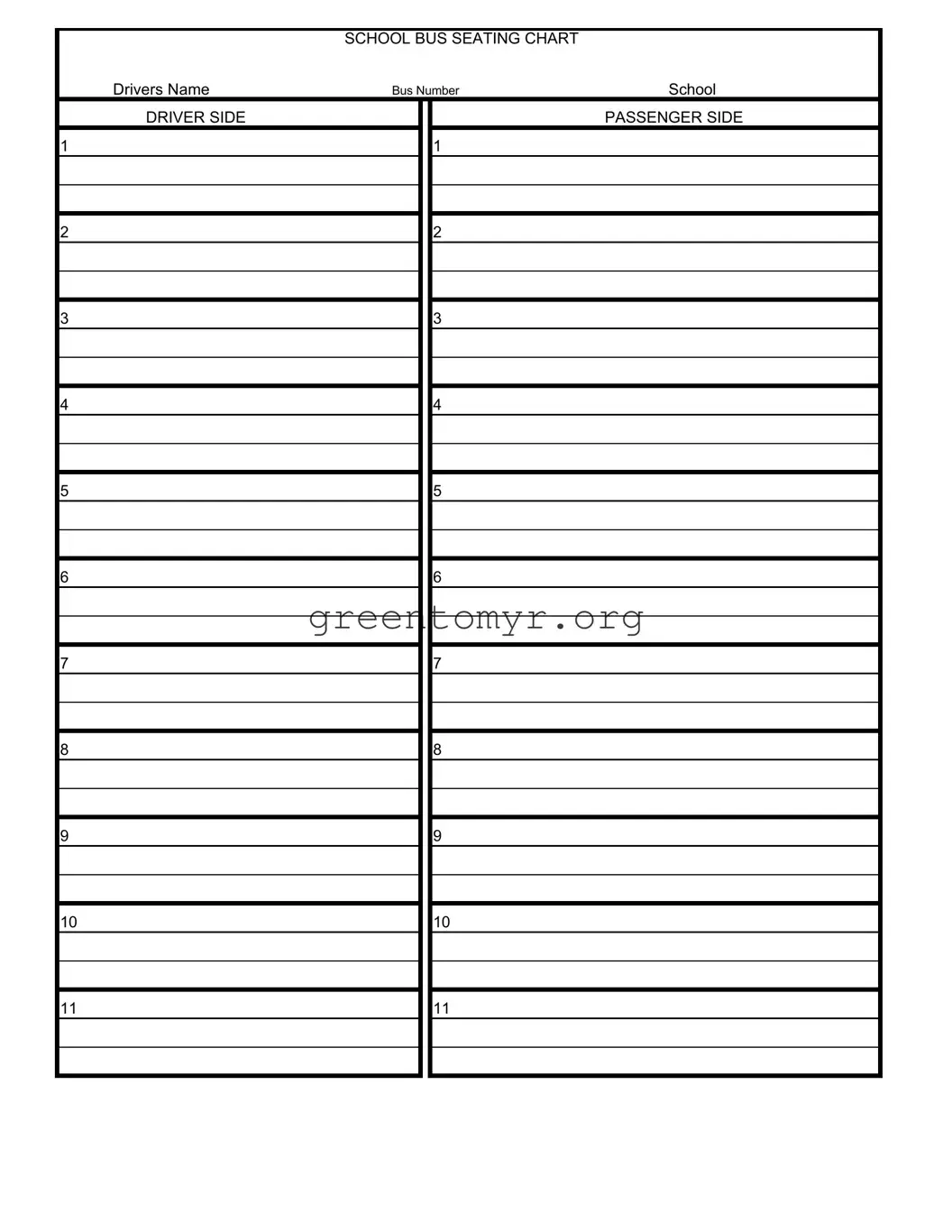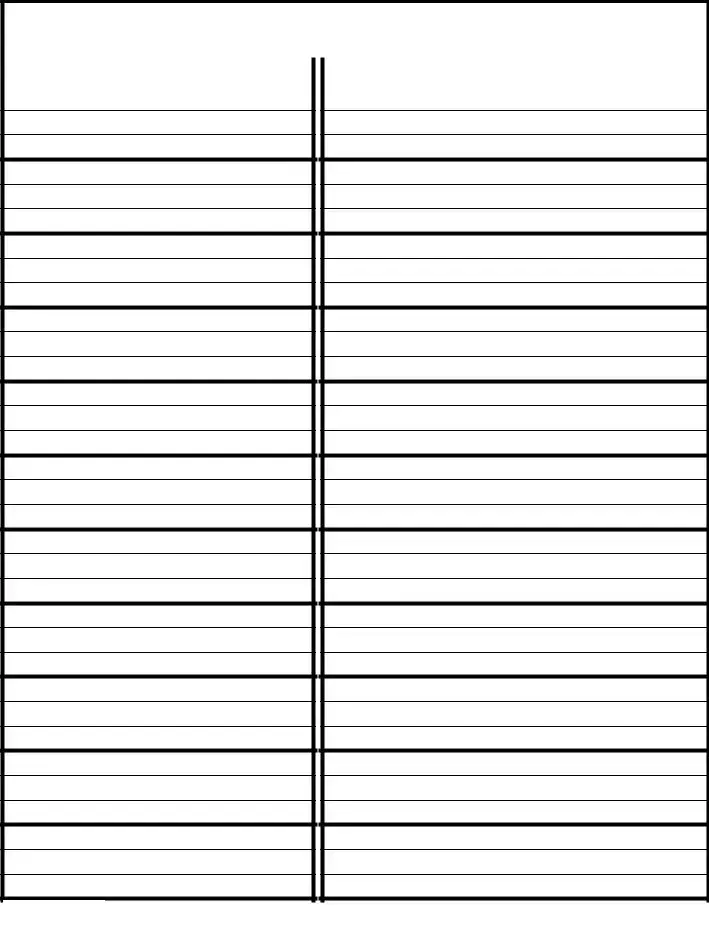The Bus Seating Arrangement form helps organize where students sit on school buses. It provides a clear layout that ensures safety and makes communication easier for both bus drivers and school officials. By having a designated seating chart, schools can track attendance, identify students quickly, and manage behavior effectively during transport.
This form contains essential details such as:
-
Driver's Name
-
Bus Number
-
Seating assignments for students, including designated spaces for specific rows and sides
Each seat is numbered, making it simple to see where each student sits, thereby enhancing accountability and safety.
According to its specifications, the Bus Seating Arrangement form must be retained for a period of five years. This retention period ensures that schools can revisit seating assignments if issues arise or for purposes like audits.
How should the Bus Seating Arrangement be filled out?
Filling out the form involves several steps:
-
Begin by entering the driver's name and the bus number at the top of the form.
-
Assign seats to students, making sure to note any specific accommodations needed for individual students.
-
Ensure that rows are numbered correctly and that each side of the bus is clearly labeled—driver side and passenger side.
Accuracy is key to maintaining an effective seating arrangement.
Can changes be made to the seating arrangement once it is submitted?
Yes, changes can be made to the seating arrangement after submission, especially if student needs change or new students join. It's important, however, to document any modifications and communicate them with the bus driver and school administration to maintain an up-to-date record.
Why is the seating arrangement important for safety?
The seating arrangement plays a crucial role in ensuring the safety of students during transportation. It allows for quick identification in case of emergencies, aids in orderly exits, and reduces the possibility of conflicts among students. By designating specific seats, it establishes a sense of structure and responsibility, which contributes to a more secure environment while on the bus.

